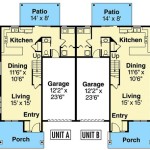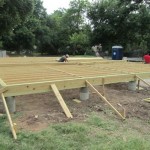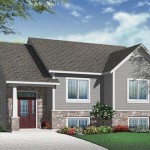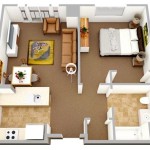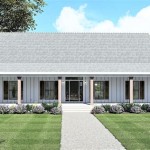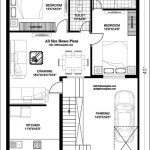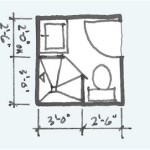Small Mediterranean Style House Plans: A Guide to Design and Inspiration
Mediterranean style house plans evoke images of sun-drenched villas, terracotta roofs, and serene courtyards. Characterized by their emphasis on natural light, indoor-outdoor living, and simple elegance, these designs translate beautifully to smaller footprints. This article explores the key features of small Mediterranean style house plans, providing insights into design elements, common layouts, and practical considerations for homeowners.
Key Features of Small Mediterranean Style Homes
Several distinct features define the Mediterranean aesthetic. These characteristics can be successfully adapted to smaller homes without sacrificing the architectural integrity or charm of the style.
Exterior Elements: Stucco walls, often painted in warm whites, creams, or earth tones, are a hallmark of Mediterranean architecture. These walls provide excellent insulation and contribute to the overall rustic appearance. Roofs are typically low-pitched and covered with terracotta tiles, though alternatives like clay or concrete tiles that mimic the terracotta look can be more affordable and practical for smaller projects. Arched doorways and windows are another common feature, lending a sense of grandeur and visual interest. Wrought iron accents, such as balcony railings, window grilles, and decorative elements, add a touch of sophistication. In smaller homes, these accents can be used sparingly to prevent overwhelming the façade.
Interior Design: Inside a Mediterranean style home, natural materials are prioritized. Stone or tile flooring is common, often in earthy colors like beige, brown, or terracotta. Walls are typically textured, either with a subtle plaster finish or exposed brick in some areas. Wood beams, whether structural or decorative, can add warmth and character to the interior. Natural light is maximized through large windows and strategically placed skylights. The color palette is generally warm and inviting, with shades of white, cream, olive green, and blue dominating. Furniture is often simple and comfortable, with an emphasis on natural fabrics like linen and cotton.
Landscaping: Mediterranean landscaping complements the architectural style with drought-tolerant plants, gravel pathways, and stone features. Olive trees, cypress trees, and lavender are common choices. Courtyards, even small ones, are often incorporated into the design to create private outdoor spaces for relaxation and entertainment. Water features, like fountains or small ponds, can add a sense of tranquility and contribute to the overall ambiance.
Common Layouts for Small Mediterranean Homes
Effective space planning is crucial in small homes. Mediterranean style lends itself well to open-concept layouts and designs that blur the lines between indoor and outdoor living.
Open-Concept Living: Combining the living room, dining area, and kitchen into a single, flowing space maximizes natural light and creates a sense of spaciousness. This layout is particularly well-suited for smaller homes, as it eliminates the need for multiple walls and hallways. Strategically placed furniture and rugs can define different zones within the open space. For example, a large area rug can delineate the living room, while a kitchen island can serve as a natural divider between the kitchen and dining area.
Courtyard Integration: Incorporating a courtyard into the design allows for a seamless transition between indoor and outdoor spaces. Even a small courtyard can provide a private oasis for relaxation and entertainment. Sliding glass doors or French doors can connect the interior living spaces to the courtyard, blurring the boundaries between inside and out. The courtyard can be used as an extension of the living room or dining area, providing additional space for seating, dining, or even a small garden. A courtyard also enhances natural light and ventilation throughout the home.
Compact Kitchen Designs: In small Mediterranean homes, kitchens are often designed to be compact and efficient. Galley kitchens or L-shaped kitchens are popular choices, as they maximize counter space and storage in a limited area. Open shelving can create a sense of spaciousness and allow for the display of decorative items. Natural materials, such as wood cabinets and stone countertops, are used to maintain the Mediterranean aesthetic. A breakfast bar or island can provide additional seating and workspace.
Strategic Bedroom Placement: Bedrooms are typically located at the rear of the house for privacy and quiet. In smaller homes, bedrooms may be smaller in size, but they can be designed to feel comfortable and inviting. Natural light is maximized through large windows, and the color palette is kept calm and soothing. Built-in storage, such as closets and shelving, can help to maximize space. Master suites may include a small en-suite bathroom and a walk-in closet.
Vertical Space Utilization: In areas with limited land availability, Mediterranean design can be adapted to two-story layouts. This allows for a larger living area without increasing the overall footprint. An open staircase, often featuring wrought iron railings, can connect the two levels and serve as a focal point. The upper level typically houses the bedrooms and bathrooms, while the ground level is dedicated to living spaces. Balconies or terraces on the upper level can provide additional outdoor space and enhance the Mediterranean ambiance.
Practical Considerations for Small Mediterranean Home Plans
Beyond the aesthetic appeal, several practical considerations are important when planning a small Mediterranean style home.
Climate Appropriateness: The Mediterranean style is inherently well-suited for warm, dry climates. However, adaptations may be necessary for regions with different weather patterns. For example, in areas with heavy rainfall, it is crucial to ensure proper drainage and to choose roofing materials that can withstand the elements. In colder climates, additional insulation may be required to maintain comfortable indoor temperatures. Double-paned windows and energy-efficient heating systems can help to reduce energy consumption.
Material Sourcing: While many traditional Mediterranean materials are readily available, some may be more expensive or difficult to source in certain regions. Alternatives, such as locally sourced stone or recycled materials, can be used to maintain the aesthetic while reducing costs and environmental impact. Careful planning and research are essential to identify the most practical and sustainable material options.
Budget Management: Building a home, regardless of size, requires careful budget management. Prioritizing key design elements, such as stucco walls and terracotta roofs, can help to maintain the Mediterranean aesthetic without breaking the bank. Choosing affordable alternatives for less visible elements, such as flooring and fixtures, can also help to control costs. Working with an experienced architect or builder can ensure that the project stays on budget and within the desired timeframe.
Energy Efficiency: Incorporating energy-efficient features into the design can significantly reduce long-term operating costs. Passive solar design, which maximizes natural light and ventilation, can help to reduce the need for artificial lighting and air conditioning. Energy-efficient windows and doors can help to insulate the home and prevent energy loss. Solar panels can provide a renewable source of energy and reduce reliance on fossil fuels. Sustainable landscaping practices, such as using drought-tolerant plants and minimizing water consumption, can also contribute to energy efficiency.
Zoning Regulations: Compliance with local zoning regulations is essential when planning any construction project. Setback requirements, height restrictions, and other regulations can impact the design and layout of the home. It is important to consult with a local planning department to ensure that the proposed design meets all applicable requirements. Obtaining the necessary permits and approvals before starting construction can prevent costly delays and legal issues.
Future Expansion: Even in a small home, it is important to consider the possibility of future expansion. Designing the home with a flexible layout can allow for future additions or modifications. For example, a detached garage or a flexible space that can be converted into a bedroom or home office can provide additional living space as needed. Planning for future expansion can increase the long-term value and functionality of the home.

Mediterranean House Plans Spanish Floor

Mediterranean House Plan Small Home Floor Florida Plans Homes

Mediterranean House Plans Sater Design Collection

Stavely 5923 1 Bedroom And 5 Baths The House Designers

Mediterranean House Plan Small Home Floor With Swimming Pool Homes Exterior Plans

House Plan 75947 Mediterranean Style With 2659 Sq Ft 3 Bed

Mediterranean Style House Plan 3 Beds 5 Baths 3313 Sq Ft 1017 145 Eplans Com

Mediterranean House Plans Sater Design Collection

Mediterranean Style House Plan 4 Beds 3 5 Baths 4923 Sq Ft 135 166 Houseplans Com

Mediterranean House Plan Narrow Lot Home Floor Plans


